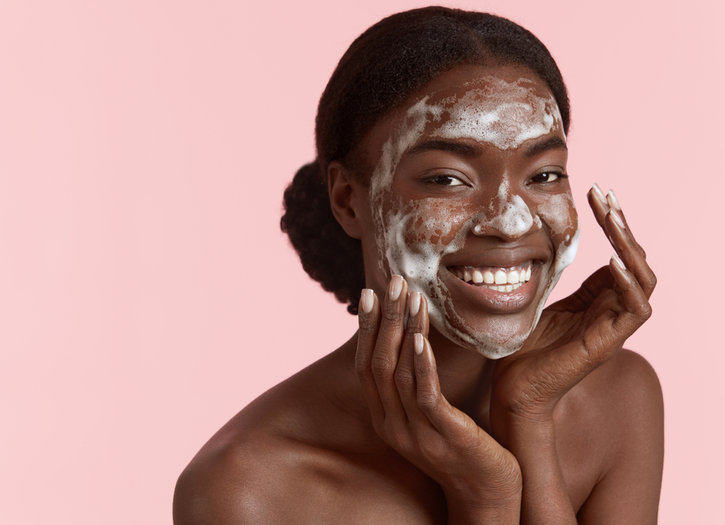Cleanser refers to a product that cleans or removes dirt or other substances. For example, a cleaner could be a detergent. Many cleansers are produced with a specific objective or focus—for instance, a degreaser or carburetor cleaner used in automotive mechanics to clean certain engines and car parts.
Other varieties include those used in cosmetology, dermatology or general skincare. In this case, a cleanser is a facial care product used to remove makeup, skincare product residue, microbes, dead skin cells, oils, sweat, dirt and other types of daily pollutants from the face. These washing aids help prevent filth accumulation, infections, pore clogs, irritation and cosmetic issues like dullness from dead skin buildup & excessive skin shine from sebum buildup. This can also aid in preventing or treating certain skin conditions, such as acne.

Cleansing is the first step in a skin care regimen and can be used in addition to toner and moisturizer following cleansing.
Sometimes “double cleansing” before moving on to any other skincare product is encouraged to ensure the complete dissolution & removal of residues that might be more resistant to cleansing. For example, waterproof makeup, water-resistant sunscreen, the excess sebum of oily skin-type individuals and air pollution particles may need extra cleansing. Double cleansing usually involves applying a lipid-soluble cleanser (e.g., cleansing balm, cleansing oil, micellar cleansing water) to dry skin and massaging it around the face for a length of time. The area may or may not be splashed with water. Any type of aqueous cleanser is then emulsified with water and used as the primary cleanser that removes the first cleanser and further cleanses the skin. Then the face is finally thoroughly rinsed with water until no filth or product residue remains.
Using a cleanser designated for the facial skin to remove dirt is considered to be a better alternative to bar soap or another form of skin cleanser not specifically formulated for the face for the following reasons: Bar soap has an alkaline pH (in the area of 9 to 10), and the pH of a healthy skin surface is around 4.7 on average. This means that soap can change the balance present in the skin to favor the overgrowth of some types of bacteria, increasing acne. To maintain a healthy pH balance and skin health, your skin must sit on the proper pH level; some individuals who use bar soap choose to use pH-balancing toners after cleaning in attempts to compensate for the alkalinity of their soaps. In addition, bar cleansers have thickeners that allow them to assume a bar shape. These thickeners can clog pores, leading to pimples in susceptible individuals. In addition, using bar soap on the face can remove natural oils from the skin that form a barrier against water loss. This causes the sebaceous glands to subsequently overproduce oil, a condition known as reactive seborrhoea, which will lead to clogged pores.


















Add Comment